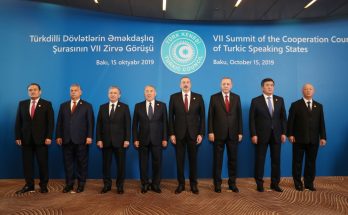
The situation is tense on the contact line of Azerbaijani and Armenian troops, the Personal Representative of OSCE Chairperson-in-Office Andrzej Kasprzyk said, according to the information obtained from military authorities and from spokespersons of the ministries of defence.
“The reports reflect a relatively high number of shooting incidents, and also of more serious violations with casualties, each of which is a tragedy for the families of the victims,” he said.
The Personal Representative of OSCE Chairperson-in-Office said that his office continues to monitor the situation along the lines of contact and Armenian-Azerbaijani border with full support and assistance of the relevant authorities.
“As always my reports related to ceasefire regime are received by the OSCE Chairperson-in-Office and the Minsk Group,” he said.
Answering to the question that after recent developments in Ukraine, the OSCE should pay more attention to the Nagorno-Karabakh conflict, Kasprzyk said that it is important that the Nagorno Karabakh conflict resolution does not fade into the background due to events elsewhere.
“The Minsk Group Co-chairs are working continuously to present ideas to the sides to move the settlement process forward. In the past moth they met twice with the foreign ministers and once with both presidents and ministers” he said.
All this work is done with the aim of moving the process forward and de-escalating tensions, according to Kasprzyk.
The Personal Representative of OSCE Chairperson-in-Office said that he is present in the region on a constant basis.
“Me and my team continuously travel to all conflict affected areas in order to liaise with all stakeholders and ensure that I provide up-to-date information to the OSCE Chairperson-in-Office and the Co-chairs of the Minsk Group,” he said.
The conflict between the two South Caucasus countries began in 1988 when Armenia made territorial claims against Azerbaijan. As a result of the ensuing war, in 1992 Armenian armed forces occupied 20 percent of Azerbaijan, including the Nagorno-Karabakh region and seven surrounding districts.
The two countries signed a ceasefire agreement in 1994. The co-chairs of the OSCE Minsk Group, Russia, France and the U.S. are currently holding peace negotiations.
Armenia has not yet implemented the U.N. Security Council’s four resolutions on the liberation of the Nagorno-Karabakh and the surrounding regions.
/Trend/




